Boom Supersonic just flew its test jet for the first time as it races to build the world's new speediest airliner meet 'baby boom'
Taylor Rains

- Colorado aerospace company Boom Supersonic flew its XB-1 demonstrator for the first time on Friday.
- Nicknamed the "baby boom," the jet tests technologies for Boom's future Mach 1.7 Overture airliner.
Colorado aerospace company Boom Supersonic wants to bring back the era of the Concorde — a beloved faster-than-sound passenger jet that flew for nearly 30 years before retiring in 2003.
Boom's vision of the next supersonic airliner is a Mach 1.7 plane called the Overture, and the company just flew its first prototype on Friday.
Nicknamed the "baby boom," the XB-1 demonstrator is the "foundation" for the futuristic Overture. Boom says it uses the experimental plane to prove innovative technologies key to safe and efficient supersonic flight.
Here's a closer look at the small but mighty baby boom.
Baby boom took a 12-minute flight across the Mojave Desert, paving the way toward the "revival of mainstream supersonic travel."
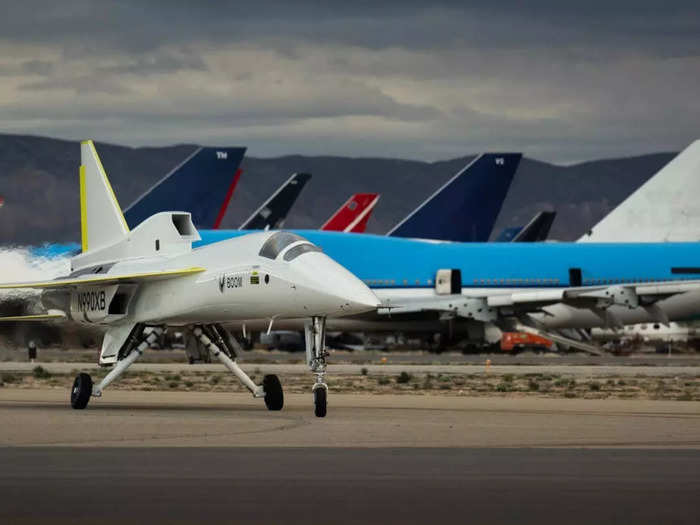
In November, Boom Supersonic announced the XB-1 was gearing up for its first flight and that the company had received its necessary experimental airworthiness certificate from federal regulators to operate the test jet.
Ahead of the flight tests, XB-1 went through a series of ground assessments, including evaluating subsystems, medium-speed taxing testing, and upgrading its engines and landing gear, the company said.
Boom said the XB-1's first flight "fully" met all of its objectives.
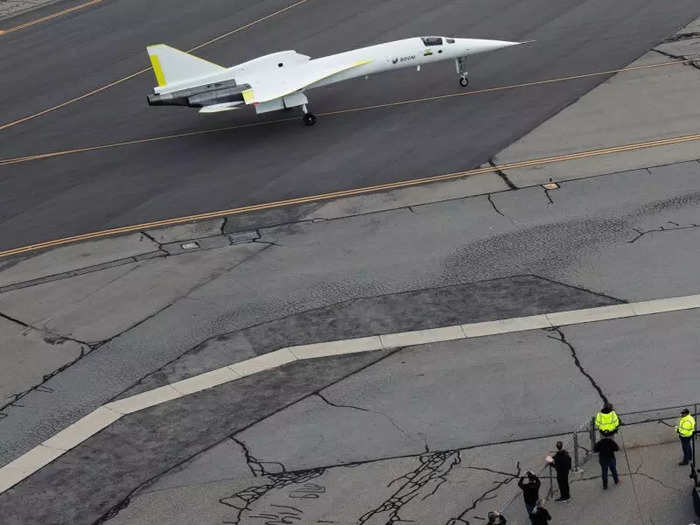
"Today, XB-1 took flight in the same hallowed airspace where the Bell X-1 first broke the sound barrier in 1947," Boom founder and CEO Blake Scholl wrote in a press release.
"I've been looking forward to this flight since founding Boom in 2014, and it marks the most significant milestone yet on our path to bring supersonic travel to passengers worldwide," he continued.
According to the company, the XB-1 took off from the Mojave Air & Space Port and achieved a 7,120-foot altitude and speeds of up to 273 mph.
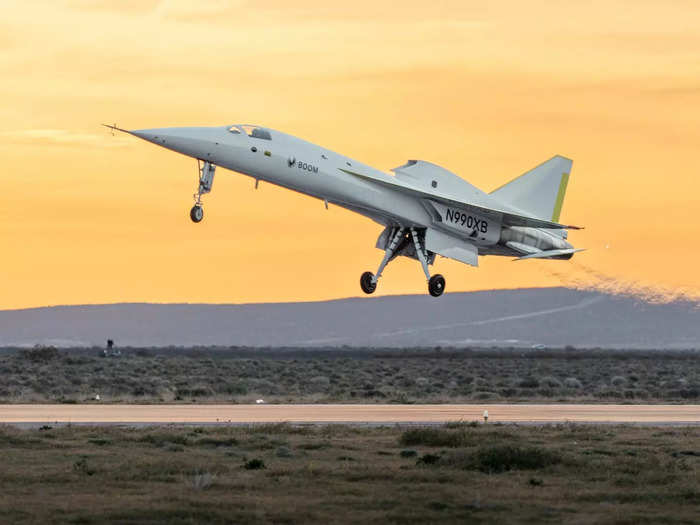
Boom said the envelope for range, speed, and altitude expands over time and several phases of testing, and its XB-1 inaugural represents just a fraction of what the Overture will be built to fly.
According to Boom, its future faster-than-sound plane is expected to bolt at speeds of up to Mach 1.7, or about 1,300 mph, and cruise at up to 60,000 feet — meaning the plane could connect New York City and London in as little as three and a half hours.
The California airfield has hosted several historic airplanes, including the supersonic Bell X-1 and the up-to-Mach 6 North American X-15.
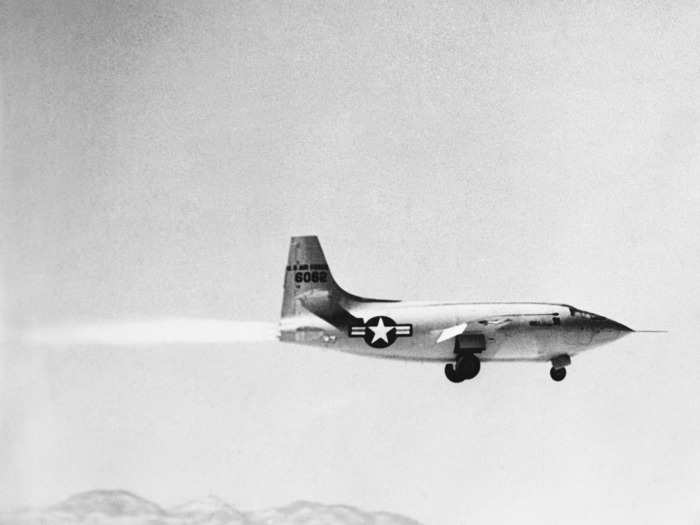
In 1947, the Bell X-1 became the first airplane in the world to fly faster than the speed of sound, soaring over the Mojave Desert, which is designated for special flight use and has a 50-mile supersonic corridor used for Mach speed flight tests over land.
Other famous planes that took off from the Mojave include a rocket-powered experimental jet called the North American X-15. According to the Smithsonian, it was the first winged aircraft to fly four, five, and six times the speed of sound.
The XB-1 was flown by Boom chief test pilot Bill “Doc” Shoemaker, who flew F-18 military jets for 21 years and has experience in test flying.
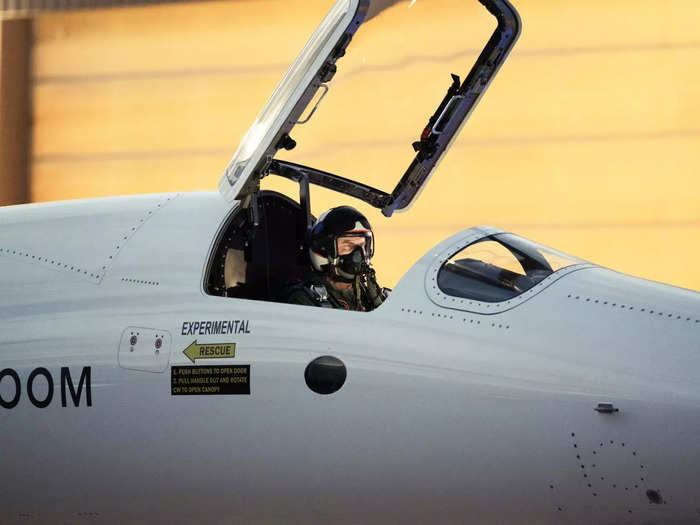
Before Boom, Shoemaker helmed the first flight of the Block II Super Hornet military jet and piloted electric vertical takeoff and landing prototypes.
"Everyone on the XB-1 team should be incredibly proud of this achievement," Shoemaker said on Friday. "It has been a privilege to share this journey with so many dedicated and talented professionals. The experience we have gained in reaching this milestone will be invaluable to Boom's revival of supersonic travel."
Alongside the XB-1 was a chaser plane called the T-38, piloted by Tristan “Geppetto” Brandenburg and responsible for monitoring the flight.
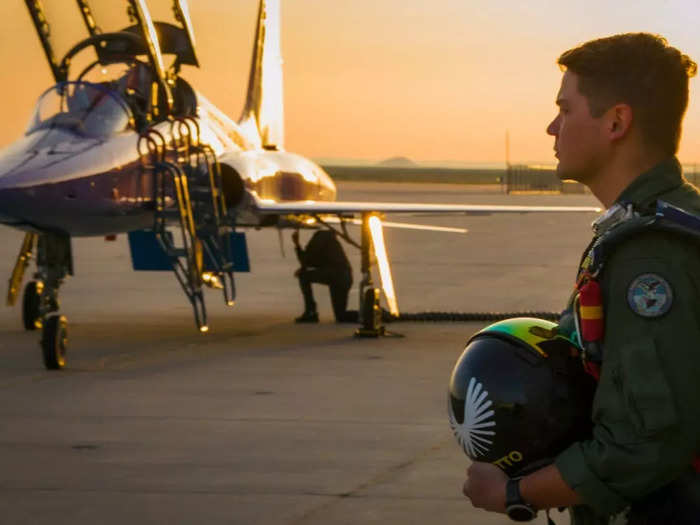
According to Boom, Brandenburg is a United States Naval Test Pilot School graduate and a TOPGUN Adversary.
Brandenburg and Shoemaker completed hundreds of training hours in flight simulators for both the XB-1 and the T-38 chaser before taking the controls in test flights.
To ensure safety, the XB-1 underwent rigorous ground and taxi tests before its maiden flight.
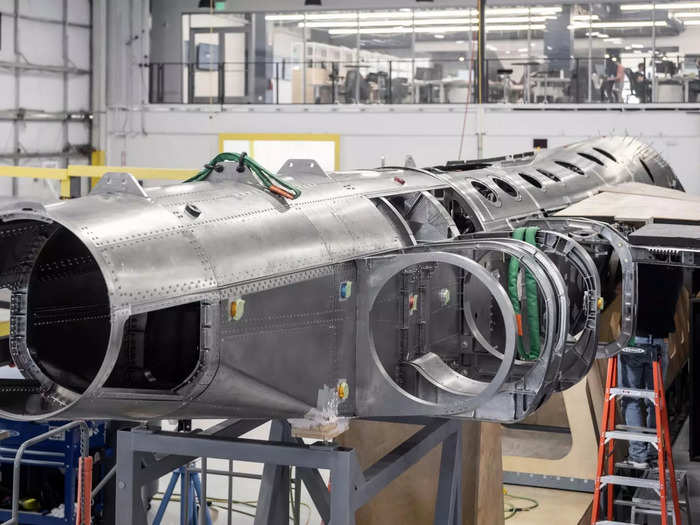
According to Boom, ground monitoring of the mission comes from a control room full of engineers and other staff.
"The control room engineers are the same ones who designed the aircraft systems and have been operating as a team for every single ground test event conducted over the last two years," Boom said.
Boom listed several key technologies being tested on XB-1, like a new type of pilot display and a fuselage that can withstand Mach speeds.

The "augmented reality vision system" involves two cameras mounted on the nose that enable "excellent runway visibility" for the pilots.
According to Boom, this can improve aerodynamic efficiency and negate the need for Overture to have Concorde's famous movable nose — which lowered to reduce drag and give the pilots better visibility.
Meanwhile, Boom said XB-1 also tests strong but lightweight carbon composite materials, supersonic intakes that slow Mach speed air to subsonic speeds, and "digitally-optimized aerodynamics" that improve supersonic efficiency.
The handling of XB-1, including airspeed checks with the T-38 and its landing stability at a high angle of attack, was also evaluated.
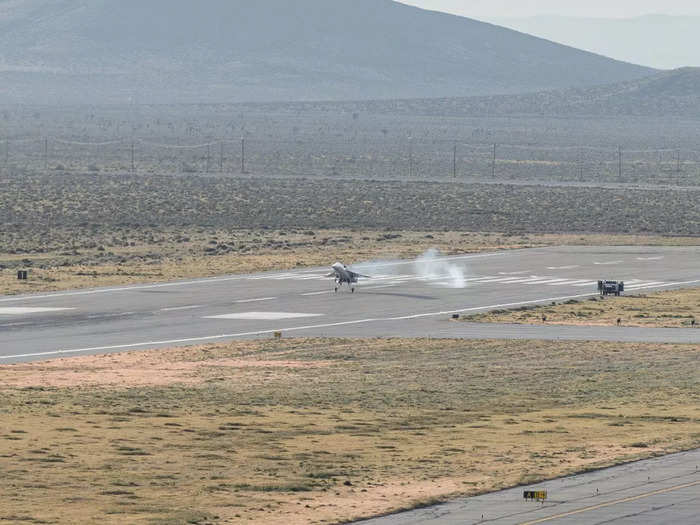
The landing was complicated, but Boom said pilot Shoemaker used the augmented reality system and the help of a "landing signal officer" positioned on the side of the runway to safely land the XB-1 demonstrator.
Powering the jet were three General Electric J85 engines that produce up to a combined 12,300 pounds of thrust, but these won't be on Overture.
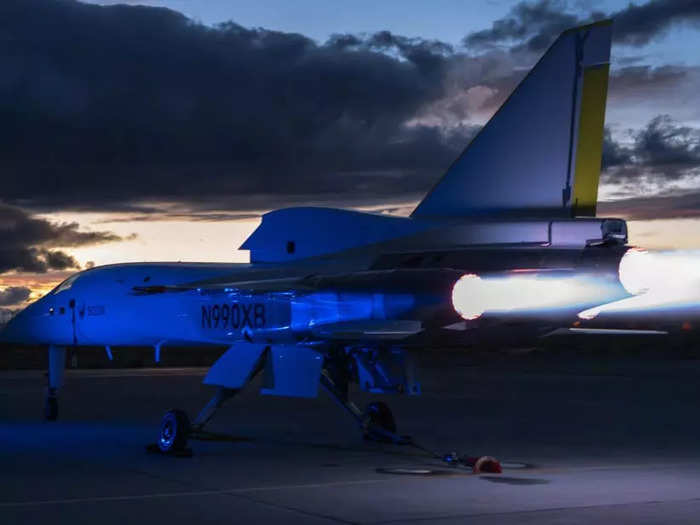
Although Boom secured GE as the powerplant supplier for its XB-1 demonstrator, the company struggled to find a major engine maker like Rolls-Royce, Pratt & Whitney, and CFM International to help build its supersonic Overture engine.
Instead, Boom is building its own engine for Overture called the Symphony. It is expected to run on 100% sustainable aviation fuel, or SAF.
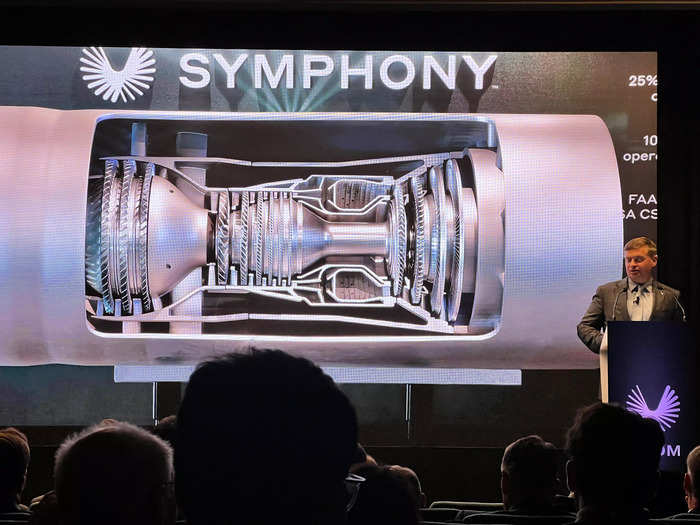
GE's 3D printing division, GE Additive, will provide Boom with "additive manufacturing design consulting and technology" to help create a lightweight and fuel-efficient design for Symphony.
Aviation analyst Henry Harteveldt told Business Insider in 2022, when Boom couldn't find an engine supplier, that building an in-house engine would be challenging but could prove lucrative should Boom sell the design.
The XB-1 airframe is also different. Parallel to building XB-1, Boom redesigned the Overture's fuselage and wings and added another engine.
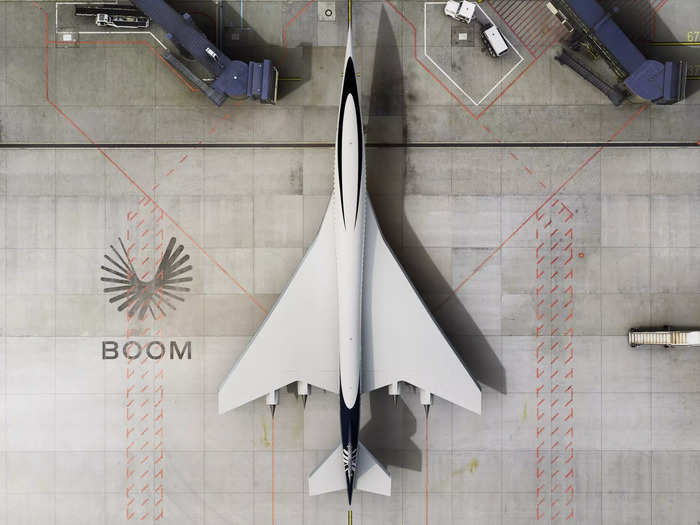
The baby boom has three engines, while Overture will have four engines mounted on the wings.
Both the XB-1 and Overture are designed with gull wings, which increase safety and decrease engine strain, costs, and noise, according to Boom.
The long-awaited inaugural of XB-1 comes 21 years after the Concorde retired, inching closer to the re-creation of civil supersonic air travel.
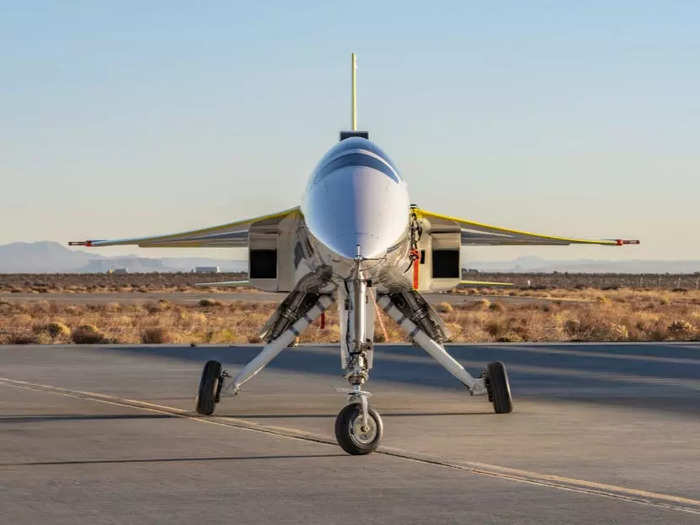
People today still rave about the time when one could fly to London in less time than it takes to cross Manhattan during rush-hour traffic.
The fastest-recorded flight of the Concorde was in February 1996 when a British Airways flight from New York to London crossed the Atlantic in 2 hours 52 minutes 59 seconds.
Boom has already garnered attention for its new Overture from American Airlines, United Airlines, and Japan Airlines.
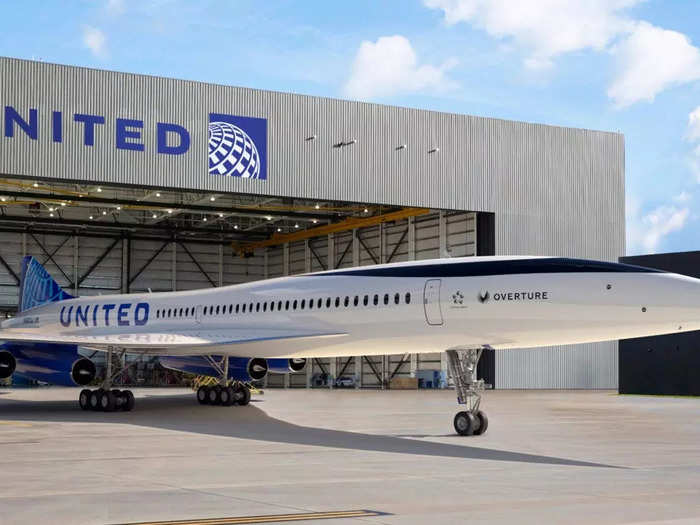
The trio of global carriers have ordered and pre-ordered a collective 130 Overture aircraft. American has ordered 20 in a deal worth $4 billion at list price, with options for 40 more.
Meanwhile, United has ordered 15 Overture worth $3 billion at list price, with options for 35 more. JAL has invested $10 million in Overture and has the option to buy 20 in a preorder agreement.
The $200 million jet is expected to carry up to 80 people in an all-business-class configuration, but tickets won't be cheap.
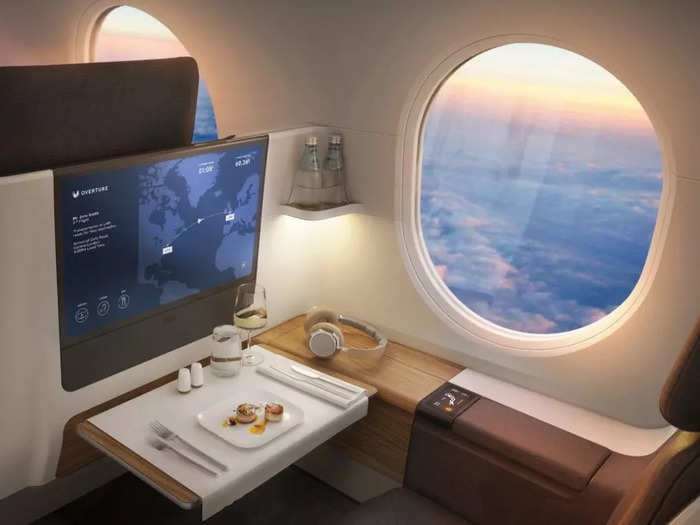
Similar to the Concorde, the Overture will sport only business class seats. However, this high-luxury product is likely to be expensive, given the high operating costs of a supersonic plane.
Boom, to its credit, is trying to reduce the operating cost of the Overture — effectively decreasing airfare.
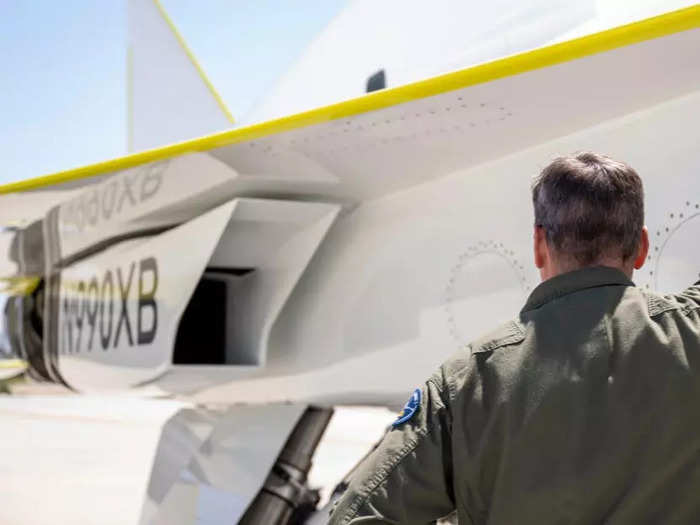
Cost-cutting tactics include implementing systems that improve aerodynamic efficiency, using lightweight materials, and building its Symphony engine with additive parts that will decrease assembly expenses, among other strategies.
"You'll be able to fly Overture for a quarter the price of a Concorde ticket, or about the same price you'd pay in business class today, Scholl said back in 2019, according to Simple Flying. "That's the most important thing."
He repeated this to Simple Flying again in 2022, reiterating Overture tickets would be 75% cheaper than the Concorde and be "within reach for tens of millions of passengers on day one."
In addition to its use as a passenger jet, Boom is working to create versions of the Overture for military and government use.
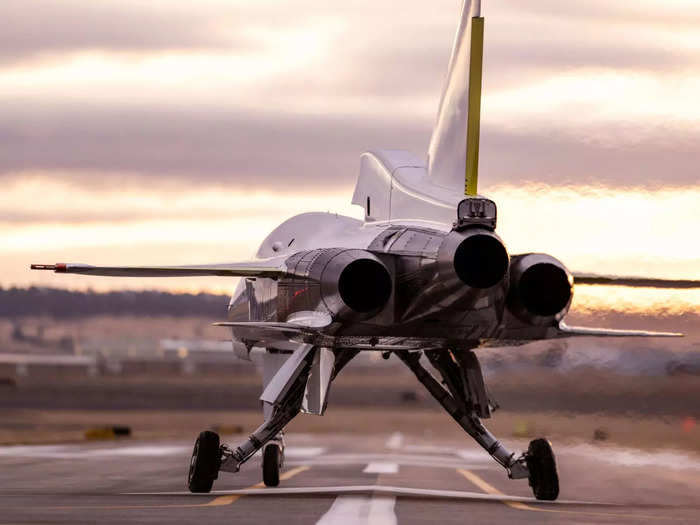
Boom said it's working with American aerospace and defense technology company Northrop Grumman for Overture's military and government applications.
Overture wouldn't be the first faster-than-sound plane to land such a lucrative contract.

The US government signed multi-million deals with hypersonic planemaker Hermeus, which is developing a jet that can go Mach 5, or five times the speed of sound — far beyond what Boom is building.
Popular Right Now
Popular Keywords
Advertisement